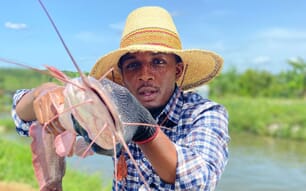Justine Innes was appointed as one of three members of a ministerial panel to lead that consultation, hear community, iwi and stakeholder views and make a recommendation to the minister as to whether the proposal should proceed or not.
These consultations are continuing and Justine obviously has an open mind as to what they might reveal. This article does not, therefore, consider the merits of the proposal in any way, but looks at the current process, the steps that might follow it and how they illustrate some of the options that might be available, should the Aquaculture Legislation Amendment (No. 3) Bill pass into law in its current form.
The current consultation process is a non-statutory one, though written submissions have been sought from interested parties and the panel will have held hearings in relation to those submissions. The panel’s terms of reference require us to provide a report on the proposal to the minister, Doug Heatley, with that report to be framed in terms of section 32 of the Resource Management Act.
Section 32 requires an evaluation report to be prepared before notifying a proposed plan, policy statement or regulation, or a change or variation to any of those things under the RMA. There are essentially three elements to the evaluation to be carried out under s.32:
- an evaluation as to the extent to which the objectives contained in that proposed plan, policy statement or regulation are the most appropriate way to achieve the purpose of this act, ie, promoting the sustainable management of natural and physical resources (with sustainable management being given an extended de?nition in the act)
- whether having regard to their ef?ciency and effectiveness, the policies, rules, or other methods are the most appropriate for achieving the objectives
- the assessment of ef?ciency and effectiveness must take into account the bene?ts and costs of policies, rules, or other methods, and
- the risk of acting, or not acting, if there is uncertain or insuf?cient information.
Because the RMA’s de?nition of sustainable management incorporates environmental, social, economic, and cultural elements, section 32 reports typically consider the ef?ciency, costs, bene?ts and risks of any proposal in terms of those four “well beings”.
If, after receiving the panel’s report, the minister decides to proceed with the proposal, changes may need to be made to the Waikato Regional Coastal Plan in order to give it effect. There are a few options for how those changes might be advanced.
The ?rst would be for the minister (or the new Aquaculture Unit) to apply to Environment Waikato for a private plan change, to be dealt with in accordance with standard RMA processes. Those processes could include the plan change being “called in” to be determined by the Environmental Protection Agency, rather than EW, if the Minister for the Environment considered it to be of national signi?cance.
The second option might be for the Minister of Fisheries and Aquaculture to use the power proposed in the bill to recommend regulations to effect changes to any regional coastal plan, assuming that power becomes law and, given that it would limit public participation in such plan change process, opposition to it can be expected.
It should be noted that the bill also proposes to amend s.32 of the RMA to make a report under that section a necessary precursor to use of the regulation-making power. By adopting the s.32 framework, the current process could therefore be seen as a test run of the approach proposed in the bill.
The third option might be for further amendments to be made to the bill to effect the necessary plan changes. It is not clear whether the timing of parliamentary and other processes would allow for this to occur, but a precedent of sorts exists in the changes the bill will make to the EW and Tasman District Regional Coastal Plans – see schedules two and three of the bill.
In any event, even if a plan change were to be promulgated to create the proposed zone (bearing in mind that we are now several steps down the hypothetical path...) no actual development of the zone could occur until resource consents were granted and the Undue Adverse Effects test conducted in respect of ?shing. The current process might be a toe in the water towards ?n ?shing farming in New Zealand on a commercial scale (other than salmon), but there is a long way to go yet.
TheFishSite is grateful to New Zealand Aquaculture and Justine Innes for this article.

